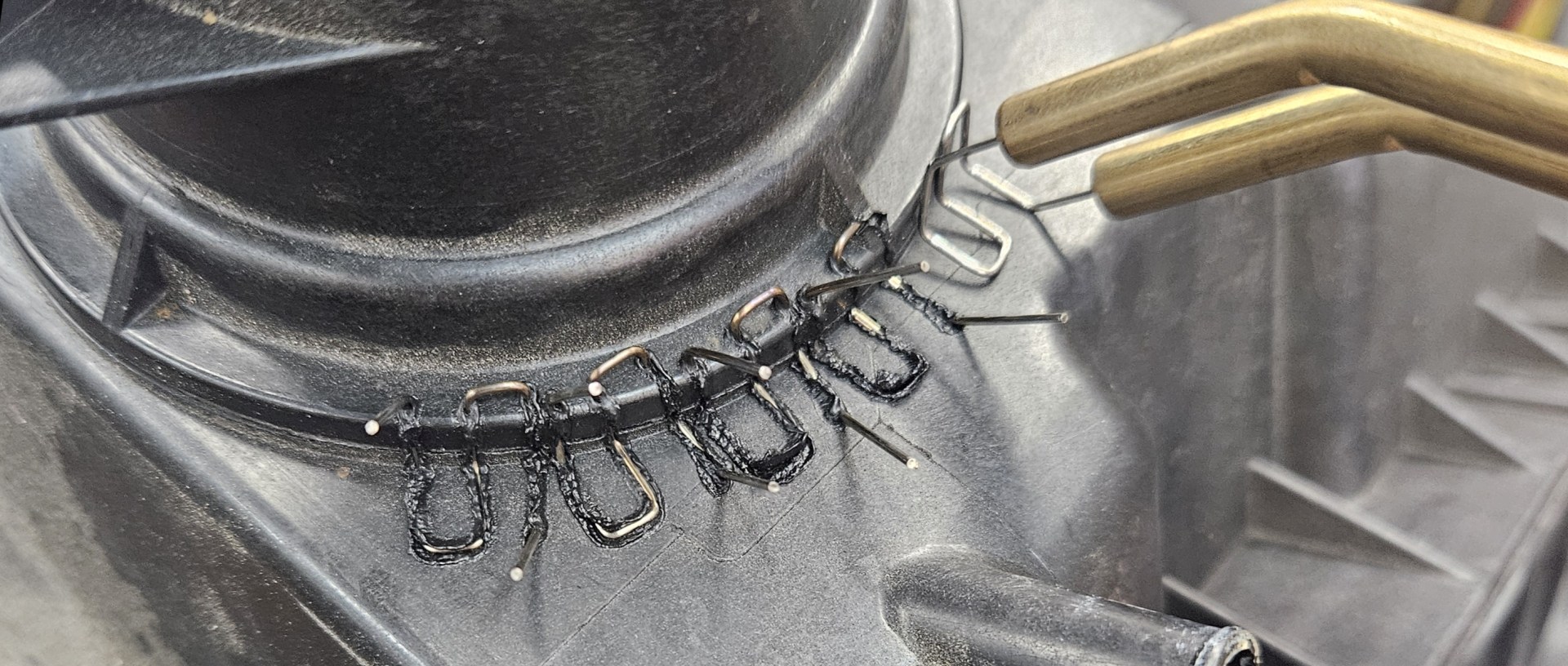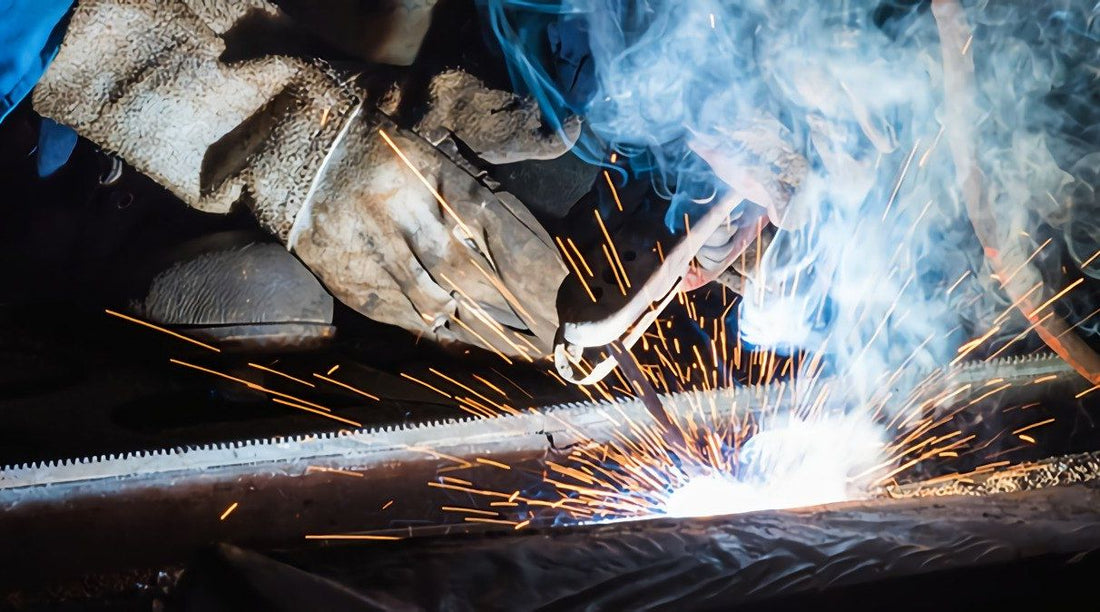Typical Welding Repair Issues and Exactly How to Address Them Efficiently
Welding fixings frequently experience a range of concerns that can jeopardize the honesty of the end product. Common troubles consist of inadequate infiltration, porosity, and misalignment, amongst others. Each flaw presents distinct difficulties that need certain approaches for resolution. Understanding these problems is essential for welders intending to enhance their skills and outcomes. This discussion will certainly discover these usual welding repair work problems and reliable approaches to address them.
Insufficient Penetration
Poor penetration happens when the weld metal falls short to totally fuse with the base material, leading to weak joints and possible structural failures. This issue usually stems from not enough heat input, incorrect electrode angle, or inappropriate welding speed. Welders may run into inadequate penetration due to a miscalculation of the essential criteria for a specific material density or type. Furthermore, contamination on the base material's surface can prevent effective bonding, worsening the problem. To address poor infiltration, welders need to guarantee ideal settings on their tools and keep a clean job surface. Routine inspection of welds is recommended to recognize any shortages early, enabling for timely modifications and the avoidance of jeopardized structural integrity in bonded settings up.
Porosity
Porosity is a common flaw in bonded joints that manifests as tiny gas bubbles caught within the weld steel. This problem can compromise the honesty of the weld, causing decreased strength and possible failure under anxiety. Montana Mobile Welding and Repair Belgrade Welding. Porosity typically arises from contamination, dampness, or improper welding methods, which enable gases to get away right into the liquified weld pool. To address porosity, welders need to ensure appropriate surface prep work, keep a clean workplace, and make use of appropriate welding parameters. Additionally, picking the right filler material and shielding gas can reduce gas entrapment. Routine evaluation and screening of welds can aid determine porosity early, guaranteeing timely restorative activities are taken, thereby maintaining the quality and reliability of the welded framework
Imbalance
Imbalance in welding can develop from different factors, including incorrect configuration and thermal development. Understanding the source is crucial for reliable resolution. Numerous modification strategies are available to realign elements and ensure structural integrity.
Root causes of Misalignment
Welding misalignment usually stems from a variety of underlying issues that can compromise structural stability. One main cause is inappropriate fit-up of parts prior to welding, which can result in gaps and unequal surface areas. Variations in thermal expansion during the welding process can also lead to distortion, especially if the materials being signed up with have different coefficients of development. Additionally, poor securing and fixturing may stop working to hold elements securely in position, resulting in movement throughout welding. Improperly maintained equipment, consisting of welding devices and tools, might present inconsistencies in the weld bead, further contributing to imbalance. Driver mistake, stemming from inadequate training or experience, can additionally play a considerable function in producing misaligned welds.

Modification Techniques Readily Available
Attending to imbalance effectively needs a mix of rehabilitative techniques tailored to the particular concerns at hand. One typical method is making use of components or jigs to hold parts in the correct placement during welding, making sure consistent alignment. In addition, preheating the products can help in reducing distortion and boost fit-up. For substantial imbalance, mechanical realignment techniques, such as making use of hydraulic jacks or clamps, can be used to deal with the placement before welding. Post-weld heat treatment may likewise be needed to soothe tensions triggered by misalignment. Ultimately, careful inspection and adjustment throughout the arrangement stage can prevent imbalance concerns from coming to be considerable issues, advertising a smoother welding process and improving overall structural stability.
Distortion
Distortion is a typical challenge in welding that can occur from various aspects, consisting of uneven heating and air conditioning. Recognizing the causes of distortion is important for implementing efficient prevention strategies. Addressing this problem not just improves architectural honesty however also enhances the overall quality of the weld.
Sources of Distortion
When based on the intense warmth of welding, materials typically undergo modifications that can bring about distortion. This sensation largely occurs from thermal development and tightening throughout the welding process. As the weld location warms up, the material expands; upon air conditioning, it acquires, which can produce interior stresses. Additionally, irregular heating across a workpiece can intensify these stress and anxieties, resulting in bending or bending. The type of product likewise plays a considerable duty; steels with varying thermal conductivity and coefficients of growth might react differently, resulting in unforeseeable distortions. Bad joint style and inadequate fixturing can add to imbalance during welding, increasing the chance of distortion. Recognizing these reasons is essential for effective welding fixing and avoidance approaches.
Avoidance Techniques
Effective avoidance strategies for distortion throughout welding emphasis on managing warm input and making sure appropriate joint layout. Preserving a constant warm input aids to reduce thermal expansion and tightening, which can cause distortion. Utilizing methods such as preheating the workpiece can additionally lower the temperature gradient, advertising consistent home heating. In addition, picking appropriate joint layouts, such as T-joints or lap joints, can boost stability and reduce stress and anxiety concentrations. Implementing appropriate fixturing to protect the work surfaces in area better aids in preserving alignment during the welding procedure. Finally, staggered welding series can disperse warmth much more equally, preventing local distortion. By using these strategies, welders can considerably decrease website the probability of distortion and boost the general top quality of their welds.
Cracking
Breaking is a typical problem experienced in welding repairs, usually resulting from numerous variables such as improper air conditioning rates, product option, or insufficient joint prep work. The occurrence of cracks can greatly compromise the honesty of the weld, resulting in prospective failings during operation. To address this problem, welders need to initially evaluate the origin, making sure that materials are compatible and properly picked for the particular application. In addition, controlling the cooling rate throughout the welding procedure is crucial; fast cooling can induce tension and bring about fracturing. Proper joint layout and preparation likewise add to decreasing the risk. Applying these methods can enhance weld quality and toughness, ultimately lowering the probability of cracking in ended up weldments.

Incomplete Combination
A substantial concern in welding repairs is insufficient fusion, which occurs when the weld metal does not properly bond with the base material or previous weld passes - Fabrication. This issue can cause weak points in the joint, possibly compromising the integrity of the welded framework. Factors adding to insufficient blend include not enough heat input, inappropriate welding strategy, and contamination of the surface areas being joined. To address this concern successfully, welders should assure correct pre-weld cleaning and surface area prep work, along with readjust their welding criteria to attain ample penetration and fusion. Regular inspection throughout the welding procedure can additionally aid identify insufficient fusion early, enabling prompt rehabilitative procedures to enhance the general quality of the weld
Overheating
While welding repair services can enhance architectural integrity, overheating presents a significant obstacle that can bring about material degradation. Too much heat throughout welding can alter the mechanical residential properties of metals, causing minimized stamina, boosted brittleness, and bending. This sensation is specifically critical in high-stress applications where architectural dependability is vital. Identifying overheating can include aesthetic evaluations for staining or distortion, along with monitoring temperature level throughout the welding procedure. To minimize the threats related to getting too hot, welders ought to utilize ideal strategies, such as controlling heat input, changing travel speed, and making use of appropriate filler materials. In addition, carrying out pre- and post-weld heat therapies can assist recover product residential or commercial properties and boost the overall quality of the repair service, making sure lasting efficiency and safety.
Often Asked Inquiries
What Are the Common Indications of a Welding Issue?

How Can I Evaluate My Welds for High quality?
To check welds for quality, one can make use of visual examinations, ultrasonic screening, and radiographic techniques. Each technique ensures architectural honesty, determines problems, and confirms adherence to defined standards, ultimately enhancing the integrity of the welded joints.
What Safety and security Precautions Should I Take While Welding?
When welding, one must focus on safety by putting on ideal personal protective devices, guaranteeing proper ventilation, protecting combustible materials away, keeping a tidy workspace, and understanding surroundings to stop injuries and accidents.
Can I Fix a Weld Without Redoing the Entire Joint?
Fixing a weld without remodeling the entire joint is possible, depending upon the damage (Welding). Methods such as grinding, including filler material, or making use of a welding procedure can successfully resolve certain defects while preserving the surrounding framework
What Equipment Are Vital for Effective Welding Repairs?
Important tools for effective welding fixings include a welding maker, cord brush, mill, protective equipment, clamps, and filler materials. Each tool plays an important role in guaranteeing high quality and security during the repair process. Porosity usually occurs from contamination, wetness, or improper welding methods, which permit gases to escape right into the molten weld swimming pool. Badly kept tools, including welding devices and devices, may present variances in the weld grain, further adding to misalignment. When subjected to the intense warm of welding, products typically undergo adjustments that can lead to distortion. Fracturing is a typical concern encountered in welding repair services, often resulting from different elements such as improper air conditioning prices, material option, or poor joint prep work. A significant problem in welding repair services is incomplete blend, which occurs when the weld steel does not adequately bond with the base material or previous weld passes.
Comments on “Solutions by Montana Mobile Welding and Repair Belgrade prevent porosity and distortion in welding”